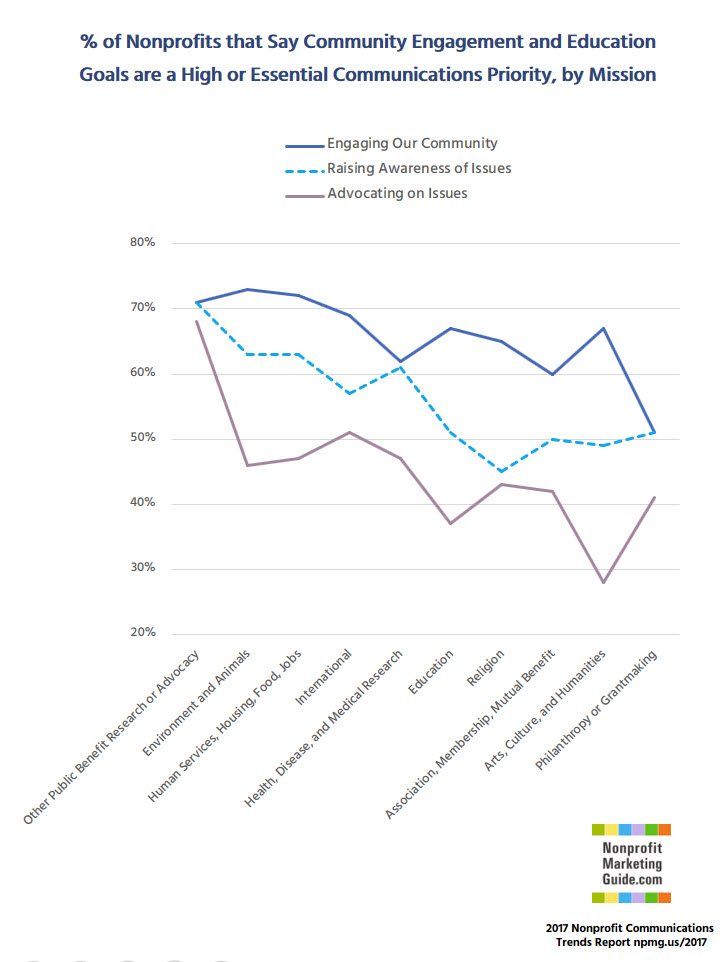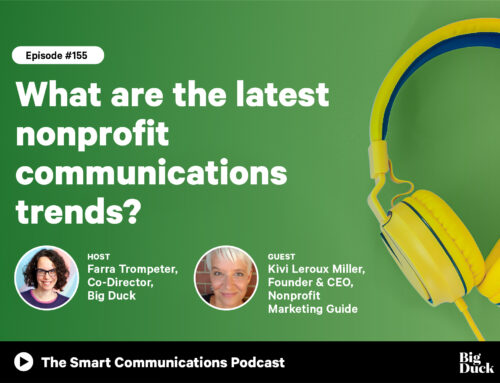 Will the way an arts organization approaches its communications work vary significantly from a social service agency?
Will the way an arts organization approaches its communications work vary significantly from a social service agency?
Over the seven years that we’ve done the Nonprofit Communications Trends Report, we’ve seen few significant differences between nonprofits with different missions. For example, in this year’s report across the 10 mission categories, there are no significant differences by mission on how they rated their own communications effectiveness, how they scored on our Marketing Maturity scale, or for communications staff job satisfaction.
We did, however, see major differences this year on which goals are the highest priorities for communications teams.
Today, let’s look at just three of the twelve goals we asked about . . .
- Engaging our community to keep people inspired by and active in our work
- Raising awareness of our issues to educate people on our cause
- Advocating on our issues to change hearts and minds
“Engaging our community” is the #1 nonprofit communications goal overall. But as you can see in the dark blue line in the graph below, it’s more important to some types of nonprofits than others. Over 70% of nonprofits working in Other Public Benefit Research or Advocacy; Environment and Animals; and Human Services, Housing, Food, and Jobs said community engagement was a high or essential priority for 2017 (left side of the graph). Barely 50% of philanthropy or grantmaking nonprofits feel the same way (right side of the graph).
The differences are even more pronounced with the other two goals in the chart. Issue awareness and advocacy goals aren’t nearly as important for foundations, associations, and nonprofits working in the arts or religion as they are for more issue-driven organizations that care more deeply about public policy decisions.
Interested in the results for fundraising or branding goals? Download your free copy of the 2017 Trends Report now.







